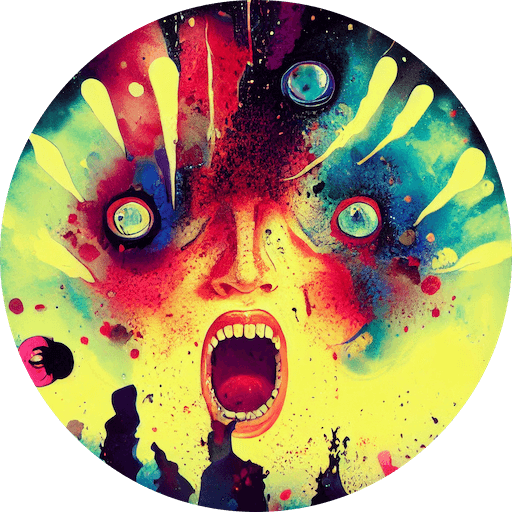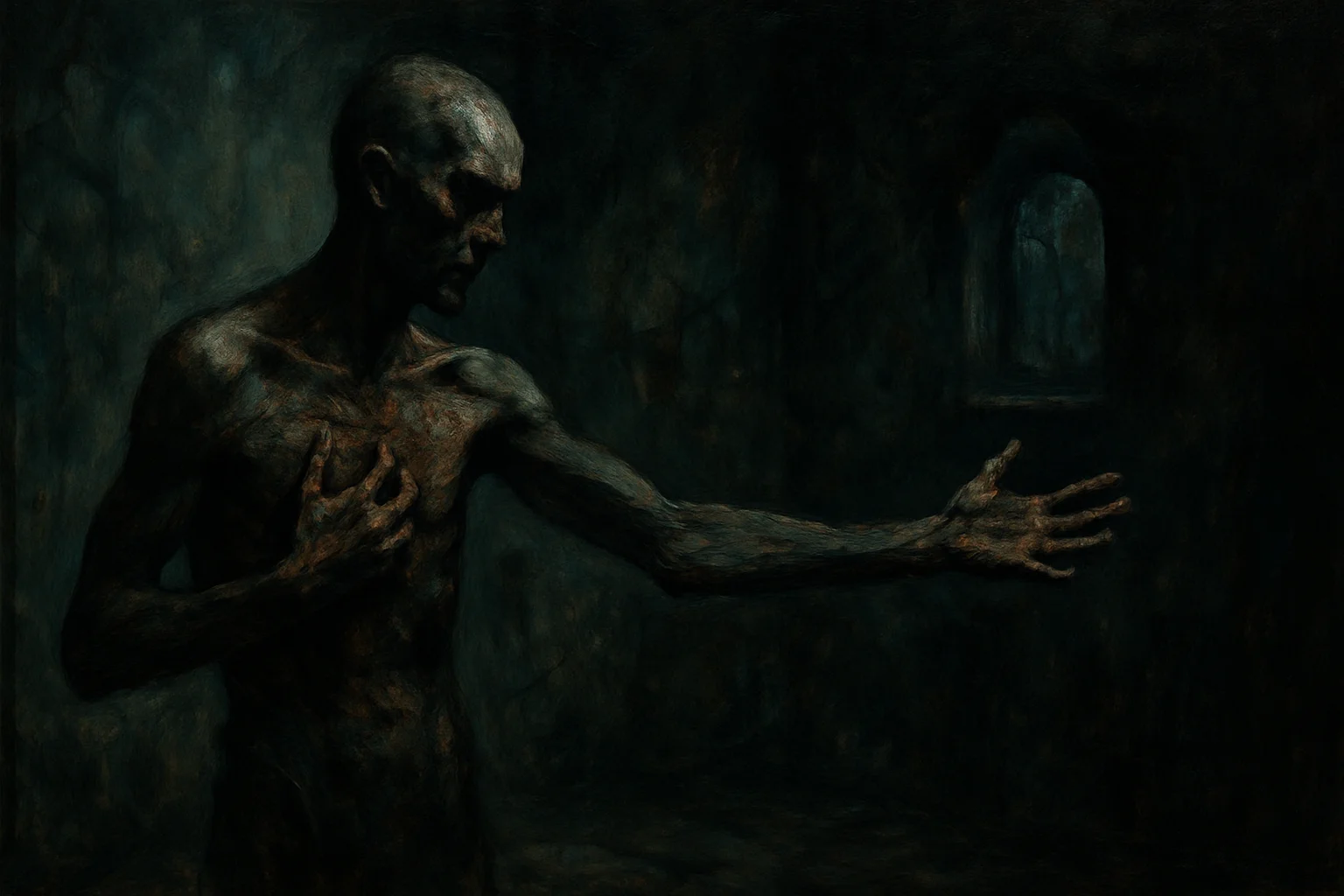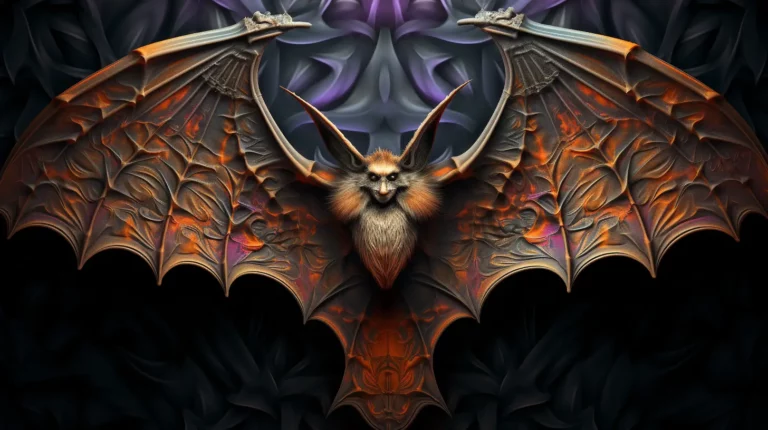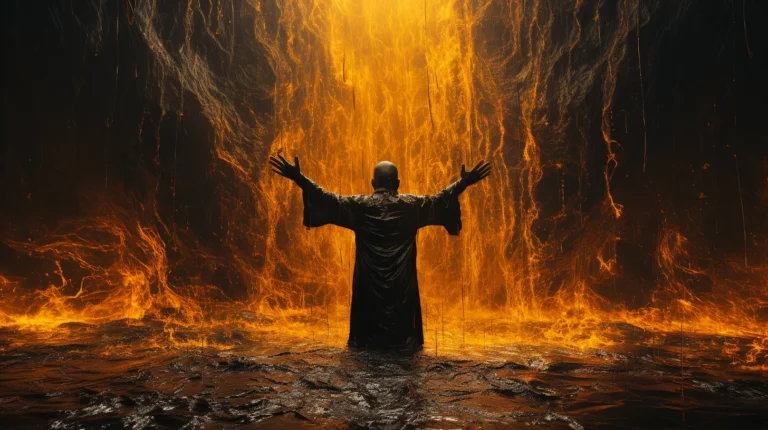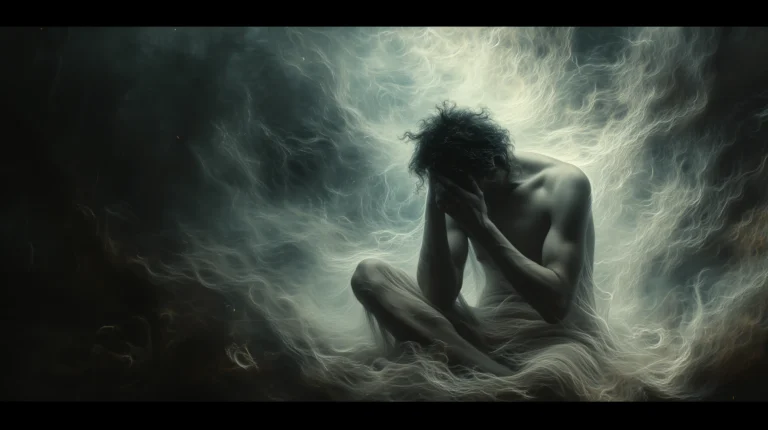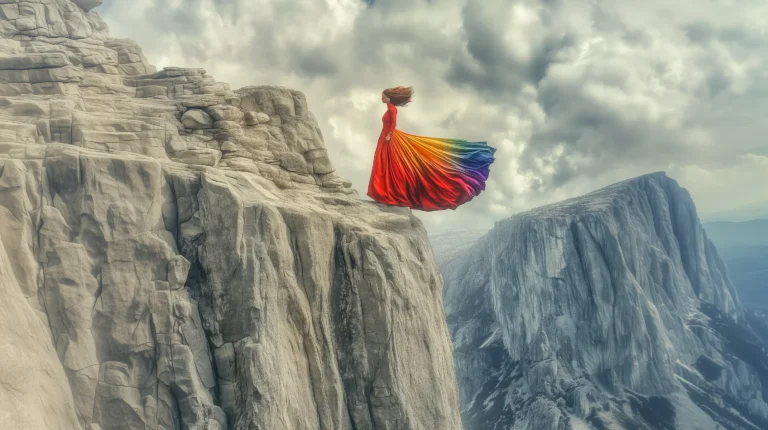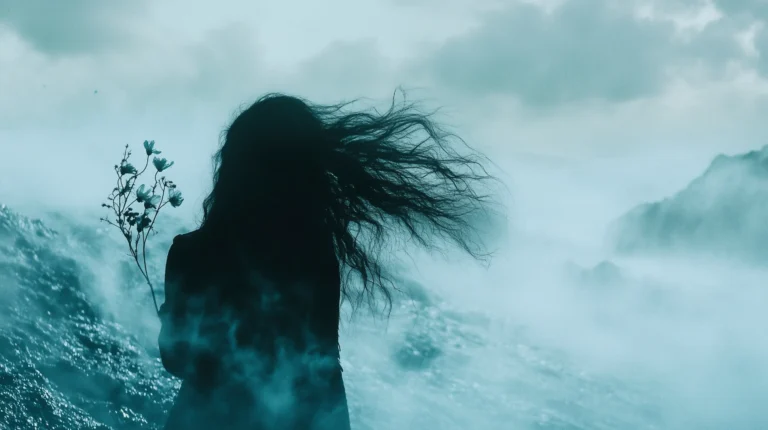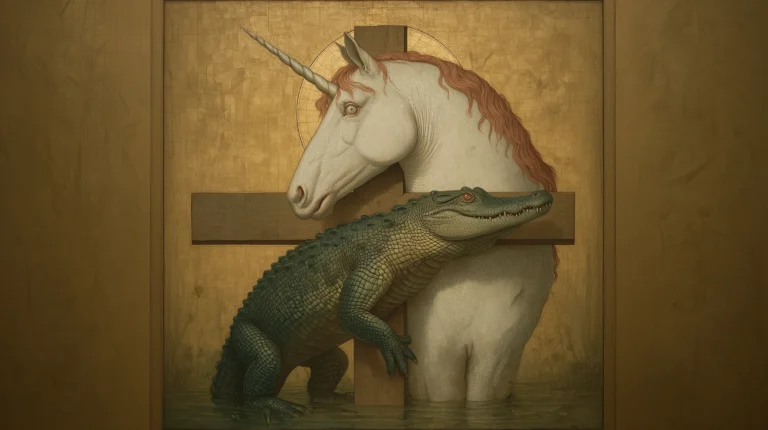The Gods Must Go: Living Beyond the Symbols
“The Buddha descended from heaven to his mother’s womb in the shape of a milk-white elephant. The Aztec Coatlicue, “She of the Serpent-woven Skirt,” was approached by a god in the form of a ball of feathers. The chapters of Ovid’s Metamorphoses swarm with nymphs beset by gods in sundry masquerades: Jove as a bull, a swan, a shower of gold. Any leaf accidentally swallowed, any nut, or even the breath of a breeze, may be enough to fertilize the ready womb. The procreating power is everywhere. And according to the whim or destiny of the hour, either a hero-savior or a world-annihilating demon may be conceived—one can never know.”
—Joseph Campbell, The Hero With a Thousand Faces
Creation myths shake loose from every culture like sparks from a fire. One moment a woman is alone in a hut; the next, she bears a child seeded by wind, feather, or god. Such tales remind us that life erupts from places reason overlooks.
Joseph Campbell gathered many of these accounts in The Hero with a Thousand Faces. Among them is an outlandish folktale from Tonga: a pregnant woman delivers—not a baby—but a clam. In time the shell produces two sons of extraordinary poise. When the twins seek their hidden father, they survive a lethal trial, liberate their mother from her shell, and overturn the old order.
The sweep is mythic, yet the subtext is unmistakably psychological: identity forms, is tested, integrates its neglected parts, and finally must jettison yesterday’s skin.
Breaking the Shell: A Tongan Folktale Retold
This retelling is based on a traditional Tongan folktale referenced in Joseph Campbell’s The Hero with a Thousand Faces, Part II: The Cosmogonic Cycle.
Once in the islands of Tonga, a woman became pregnant. But when her time came, what she delivered was not a child—but a clam. Disappointed, her husband cast the shell aside. The woman, however, still believed there was meaning in this birth. She took the clam and placed it in the sacred bathing pool of a powerful chief named Sinilau.
Time passed. One day, Sinilau came to bathe. As he did, a coconut husk he used for washing floated on the surface. The clam, drawn to it, swallowed the husk—and from that strange encounter, something stirred within. The shell became pregnant.
Later, the clam returned to the woman’s home, asking for a private place to give birth. Behind a curtain, it opened and delivered a healthy baby boy. The clam returned to the pool, and the woman raised the boy as her own. Time passed again, and the clam came back—pregnant once more. A second son was born in the same way. Both boys grew strong, noble, and wise under the care of their grandmother.
Years later, news spread that Sinilau was holding a grand festival. The grandmother, sensing the time had come, told the boys: “This man, the chief, is your father. Go to his gathering.”
At the festival, the youths stood out among the crowd—handsome and composed, radiating something unspoken. As they passed, many turned to admire them. Women called to them playfully, but they moved on, steady and focused, until they arrived at the heart of the gathering.
Sinilau, disturbed by the attention they were drawing, ordered his men to seize one of the boys and cut him open. A bamboo knife was sharpened. But when the blade touched the youth’s skin, it slipped off harmlessly. The boy spoke:
“The knife is placed and slips.
Gaze at us.
See whether we are like you, or not.”
Sinilau paused. The words struck a hidden chord. He demanded to know who they were. “We are your sons,” they said. Moved, Sinilau embraced them. Recognition replaced threat.
He sent them to bring their mother. The boys returned to the pool, retrieved the clam, and carried it to their grandmother’s house. There, the shell was broken—and from it emerged a radiant woman named Hina, alive and graceful, no longer hidden.
The family returned together. The two sons sat on either side of Sinilau. Hina took her place beside him. The truth had risen to the surface.
But to seal this truth, the old illusions had to die. Sinilau ordered his former wives and their children to be cast into an oven—burned away like outdated stories. In their place stood the integrated family: father, mother, and the true-born sons.
- Father is nothing but clear seeing—the part of you that knows what is real.
- Mother is steady warmth—the instinct to protect and nurture life as it appears.
- Sons are the deeds that flow from that union: choices made, work done, footprints left.
When a New Myth Feels Like Breath
People raised in single-axis theologies often migrate toward Hinduism’s sprawling cosmos of deities, mantras, and yogic laboratories. After tight doctrines, the plurality feels like oxygen. Each god or goddess plays the part of the clam, the coconut, the knife: a vivid image that jolts slumbering circuits awake.
Neuroscience now confirms what yogis intuited—repeat an imaginative practice and the brain’s architecture shifts. Shiva meditation thickens regions for focus; devotion to Ganesha calms limbic panic. Myth fuels biology.
But every catalytic image risks ossifying into a cage. A believer who once found freedom bowing to Shiva may end up wielding Shiva’s trident against rivals—or against their own curiosity. In Tonga, the chief’s former wives perish when they resist the new alignment; so too must yesterday’s dogmas yield once their lesson is embodied.
Life Beyond the Shell
The Tongans’ tale ends in triumph, but the myth’s secret finale happens offstage. After coronation, the twins must chop wood, share food, feel boredom, raise children, fail, and forgive—without invoking miracles. That is our task as well. The Hindu epics whisper the same lesson: Krishna urges Arjuna to fight without clinging even to Krishna; Shiva dances the cosmos only to dissolve into nameless stillness.
Belief is scaffolding. Once the new storey is built into nerve and habit, dismantle the poles and planks. Leave them for another seeker, or for the fire.
Let outdated identities die, making room for a more integrated self. Then live—fully, and without a shell.
Beyond the Shrine-Room: Life After the Symbols
A caterpillar does not carry its chrysalis into the sky.
The casing did its work; now it must tear and fall.
Our inner work follows the same logic. The myths, mantras, and theological scaffolds that once coaxed the psyche to grow have already fused with our nervous system. Their job is finished. To keep bowing to them is spiritual nostalgia: sentimentality mistaken for depth. The real question is what happens after the shell cracks.
When identities dissolve, most people reach for new ones—atheist, activist, digital nomad, whatever. That reflex is the last gasp of the old machinery. Instead, try this experiment:
- Wake up naked of labels. Let biography be a rumour until action proves it.
- Let context script you. In the garden, be chlorophyll’s accomplice; in the courtroom, be lucid speech; in grief, be quiet presence.
- Allow contradictions. You can write software at dawn, chant with monks at noon, and study dark matter at midnight. Coherence is overrated; vitality is not.
Death-Ground Creativity
Knowing that every imprint will one day be obsolete grants ferocious freedom. You are always prototyping the next self, fully aware it will also be outgrown. This “death-ground” mindset cuts through perfectionism: ship the project, voice the poem, love the person—then evolve.
Let outdated identities die, making room for a more integrated self. Everything else—scripture, symbol, status—was scaffolding. The building now stands on its own biochemical legs. Walk it into the world.
- Shiva is not a god in the sky. He is the part of you that cuts through illusion.
- Parvati is not a goddess with a name. She is your calm strength and care.
- Ganesha is not a statue. He is your mind solving problems.
You borrowed their names to train those muscles. Now the training is complete. Let them go. If you keep clinging, they become idols. Tribe symbols. Dogma. You’ll fight in their name, obey in their name, and get used in their name. The gods don’t want worship. They want to be released.
So thank them. Bow once. Blow out the candle. Turn the idol back to clay. Let silence speak where mantras once did. Now show your devotion by living. Cut what’s false. Protect what’s real. Create what is needed.
- Don’t invoke Shiva—act with clarity.
- Don’t pray to Parvati—stand with love.
- Don’t call Ganesha—solve the block.
This is the final step: not faith, but function. Not belief, but embodiment. Let the Mother go. Let the Father go. Let the Son go. Let them all go. Now live.
Drop the holy trinity. Shiva, Parvati, Ganesha did their job. Courage, care, cunning now live in your nerves. Thank the statues, scrap the altar, walk on.
Drop God too. The question “What is God?” is the questioner talking to itself. When the question falls silent nothing is left to debate.
Drop non-duality. Saying “All is One” or “All is not Two” is still a slogan—another cage with softer walls. Thought cannot outrun thought.
- Any attempt to escape the mind using the mind fails. A thought that says, “I’m beyond thought,” is still a thought.
- The ‘witness,’ mystical insights, even the idea of God are mental products. They arise in the same stream they claim to transcend.
- Trying to think your way past thinking just adds another layer. Like writing “no words” with more words.
So what remains?
- Heartbeat, breath, a crack in the ceiling, the smell of dust.
- A phone that needs charging, a child who needs lunch, a stranger who needs directions.
- Action. Mistake. Repair. Repeat.
- No witness required.
- No ultimate meaning to chase.
- Life moves anyway.
- Let every idea rise, do its work, and die on time.
- Meet the next moment naked.
- That is the only freedom there is.
Let each idea die on time. No shrine left. Just you, alive.
